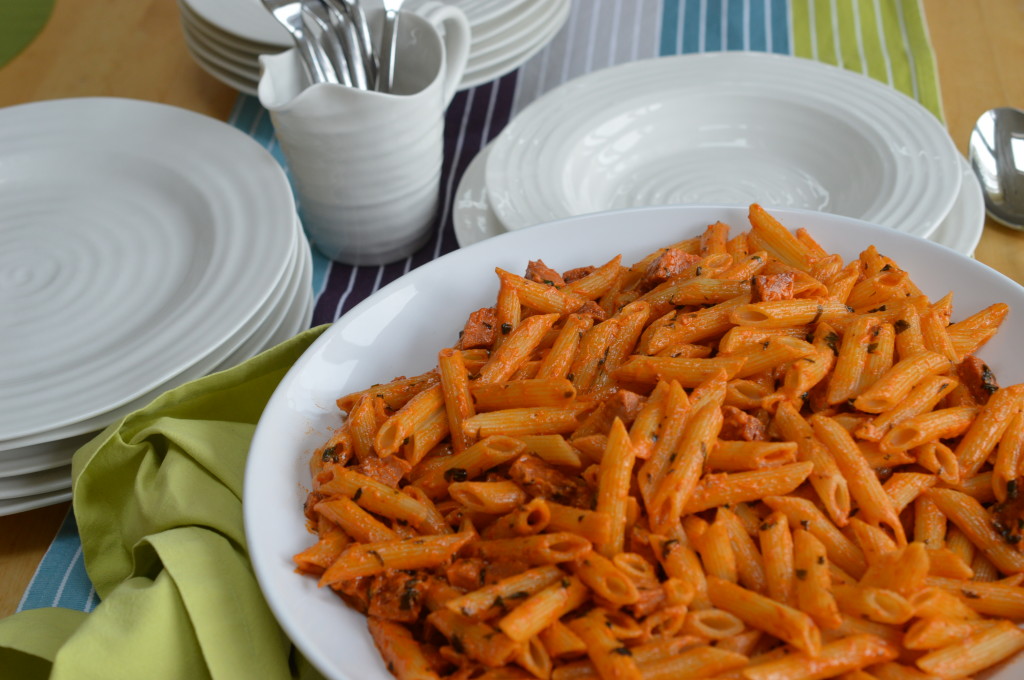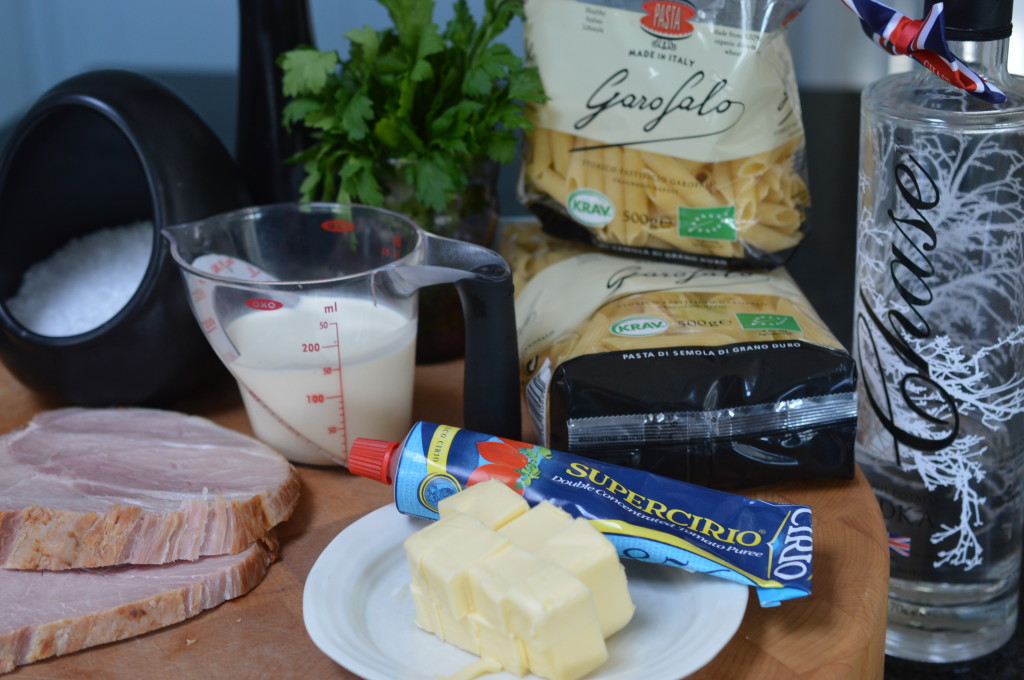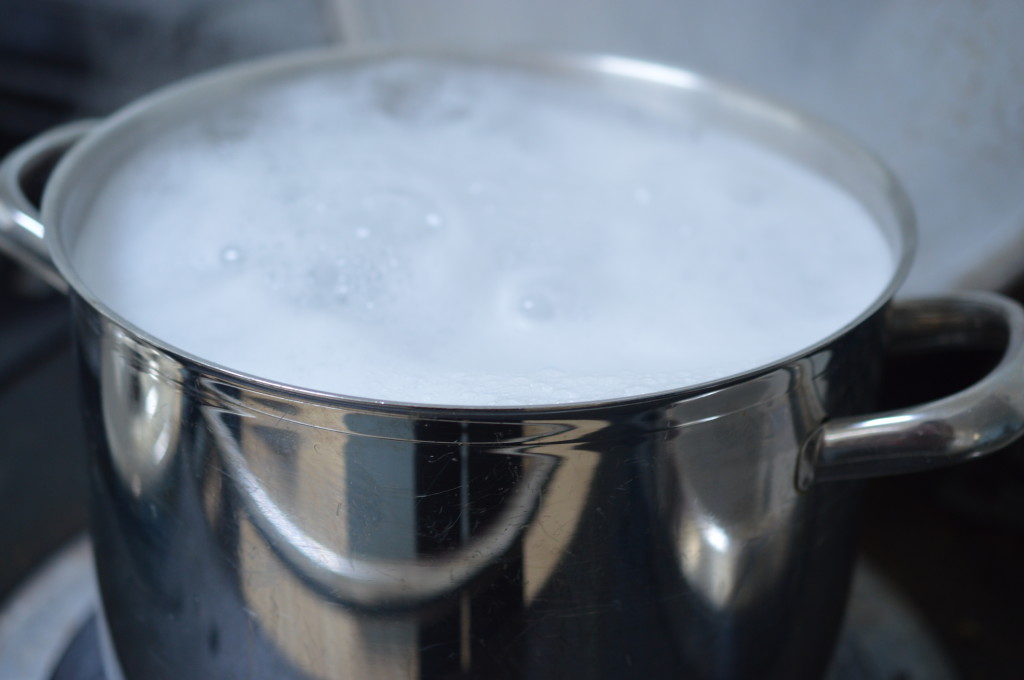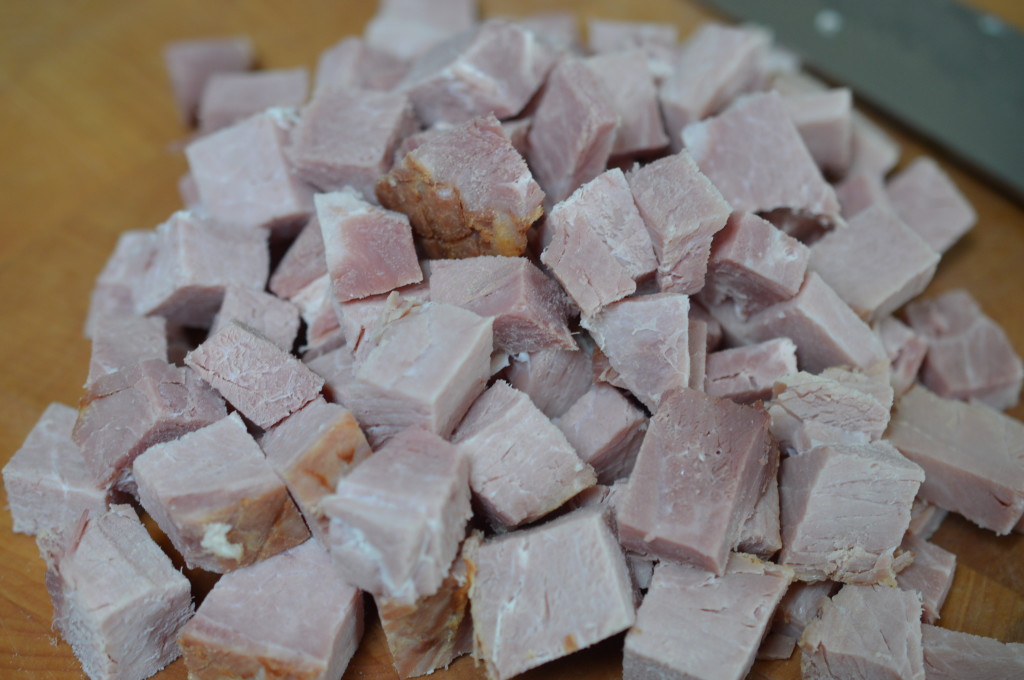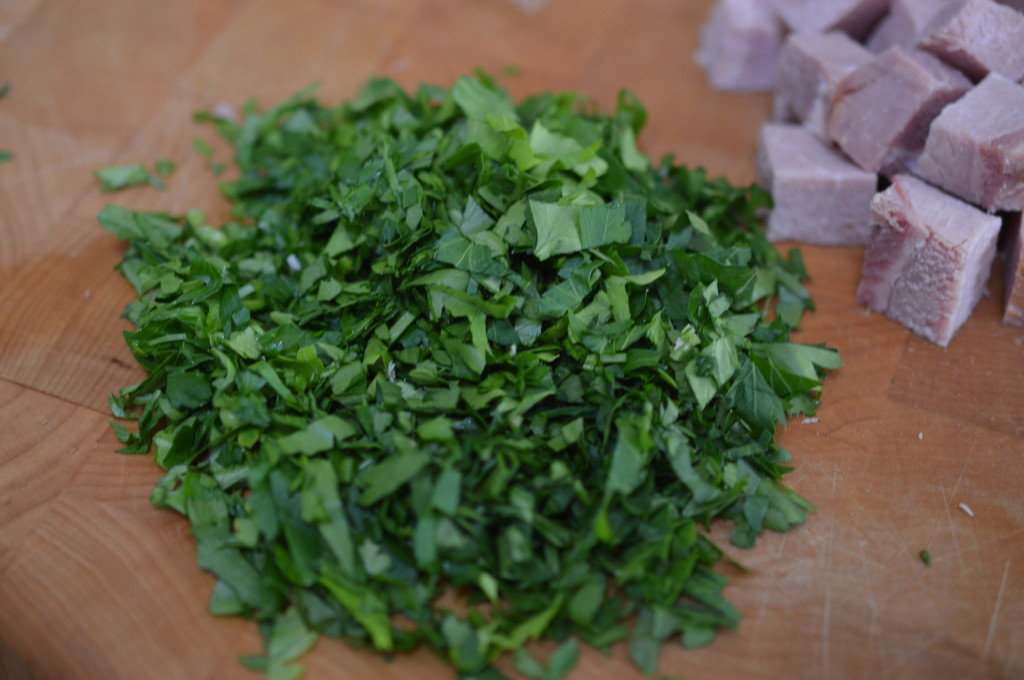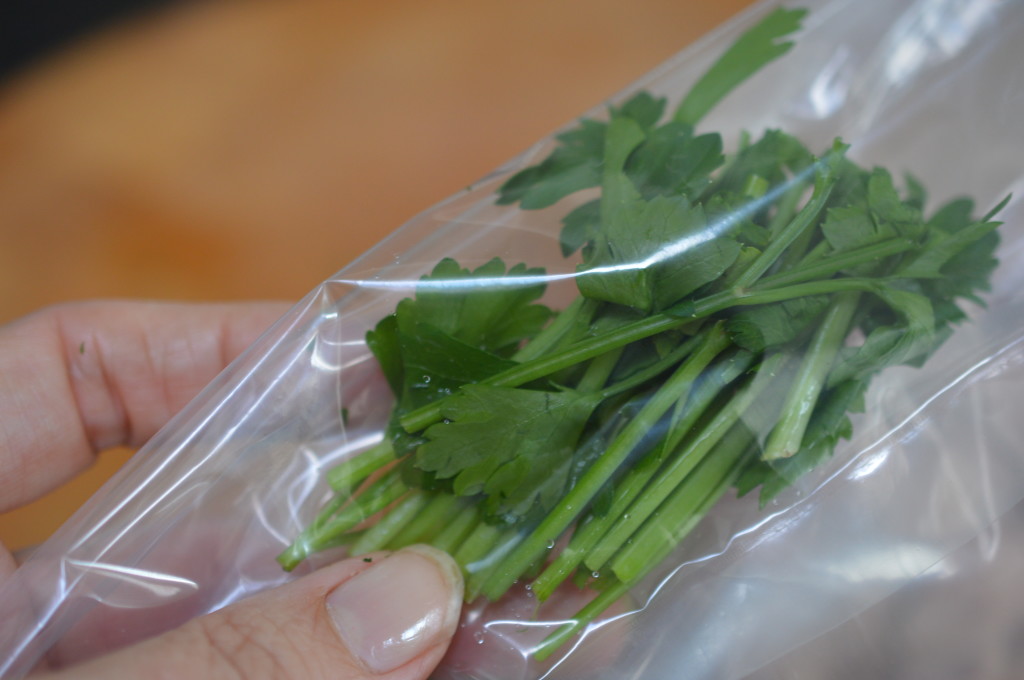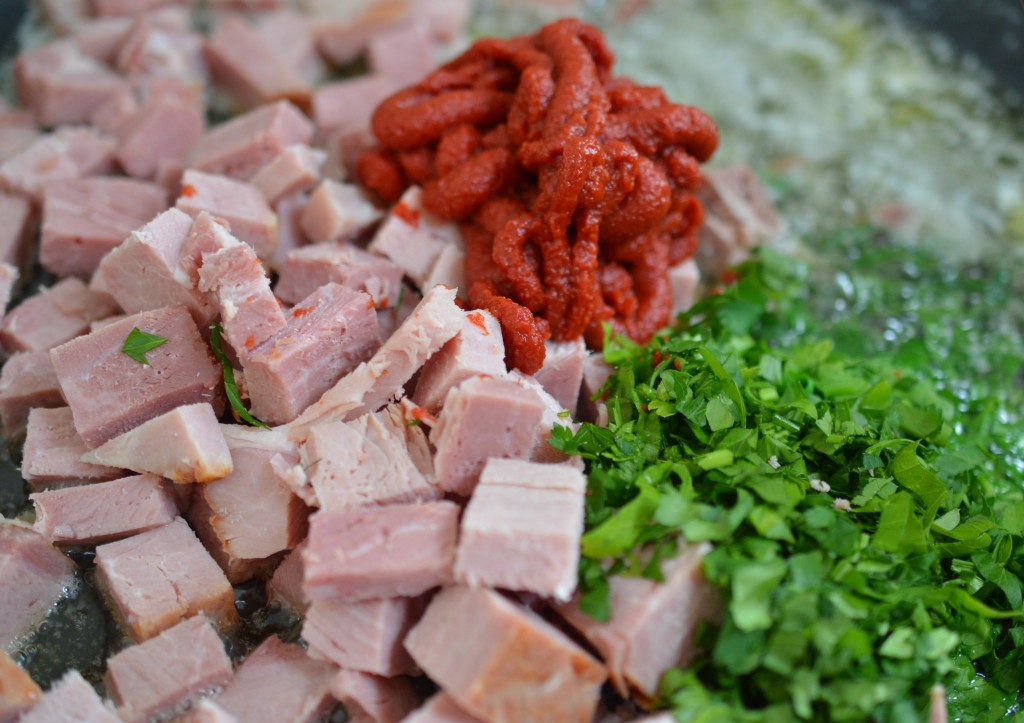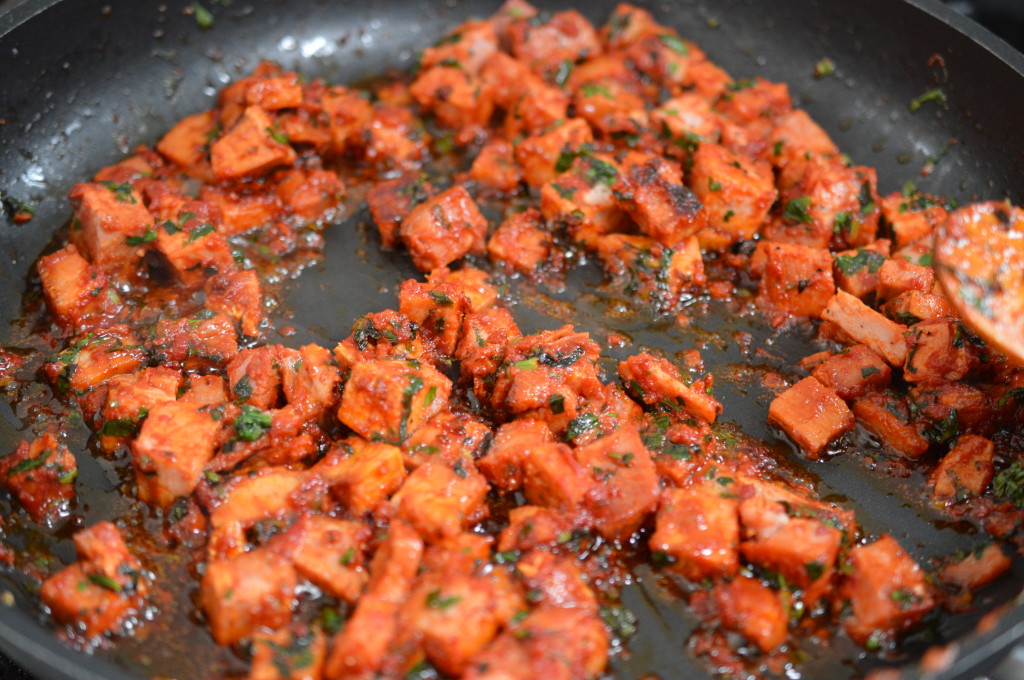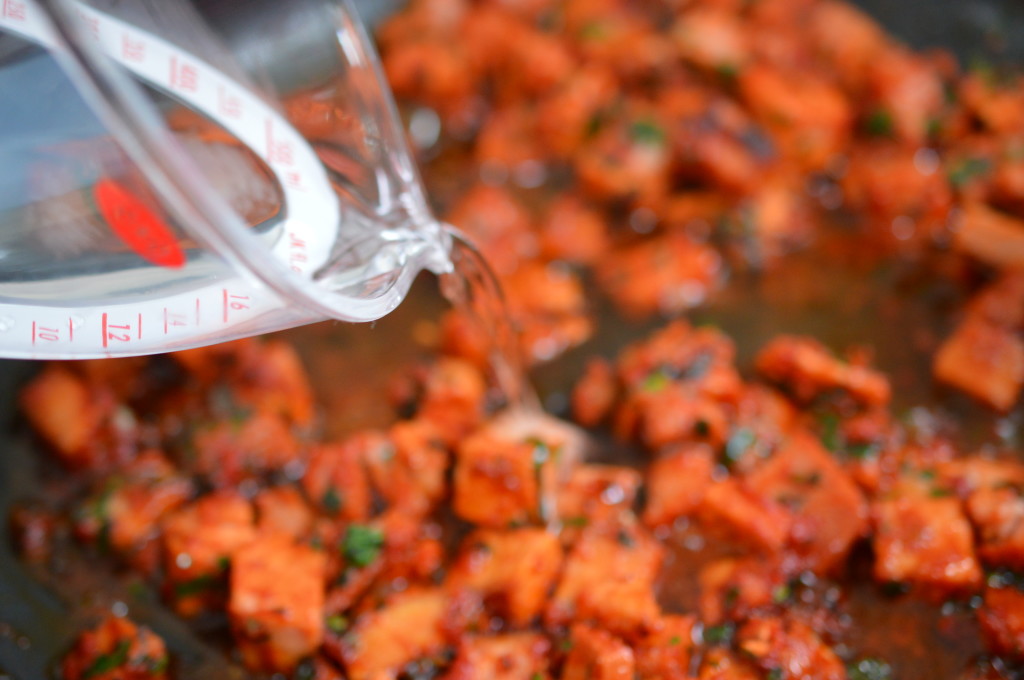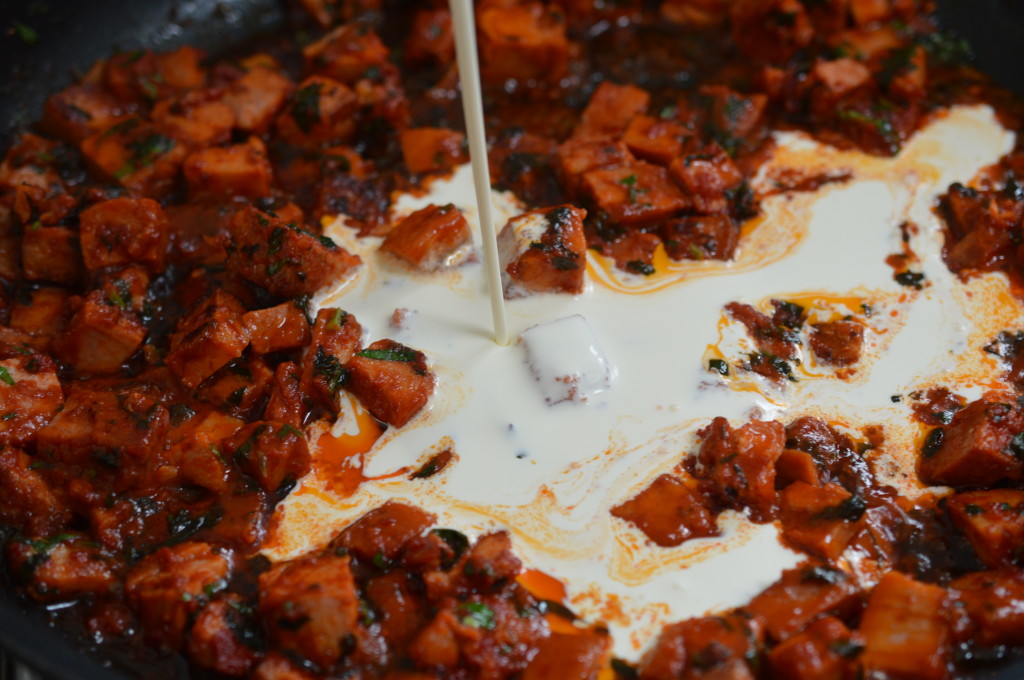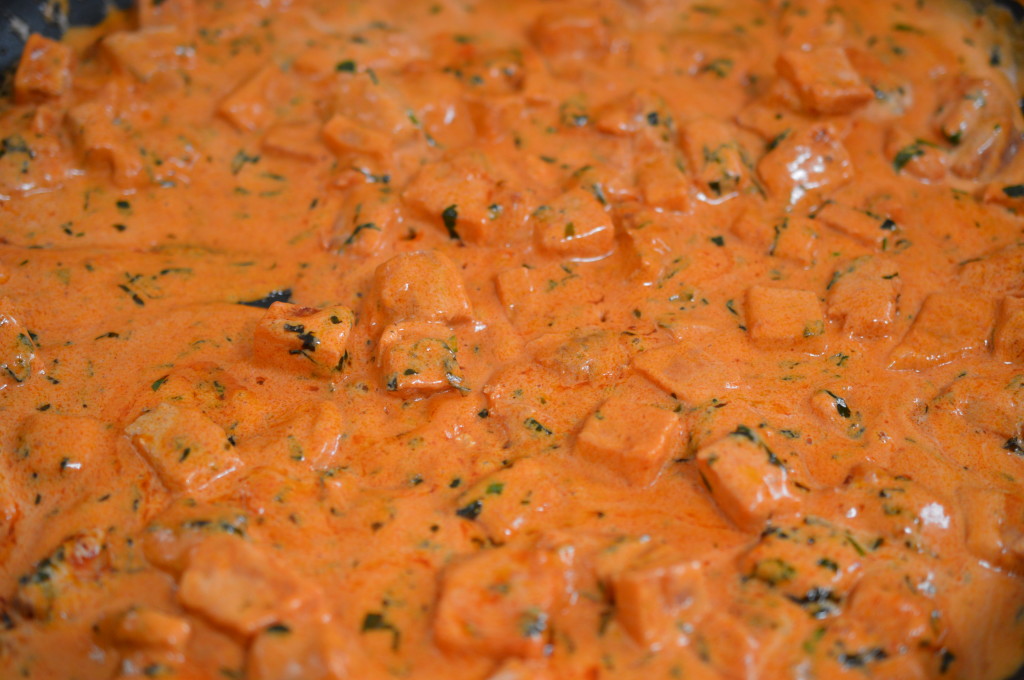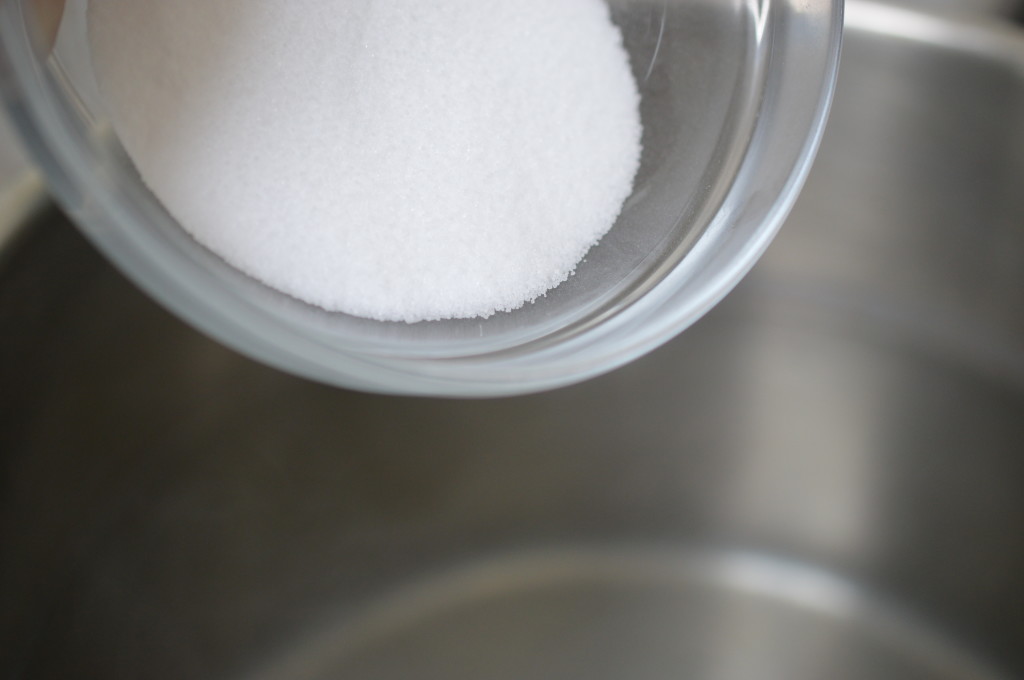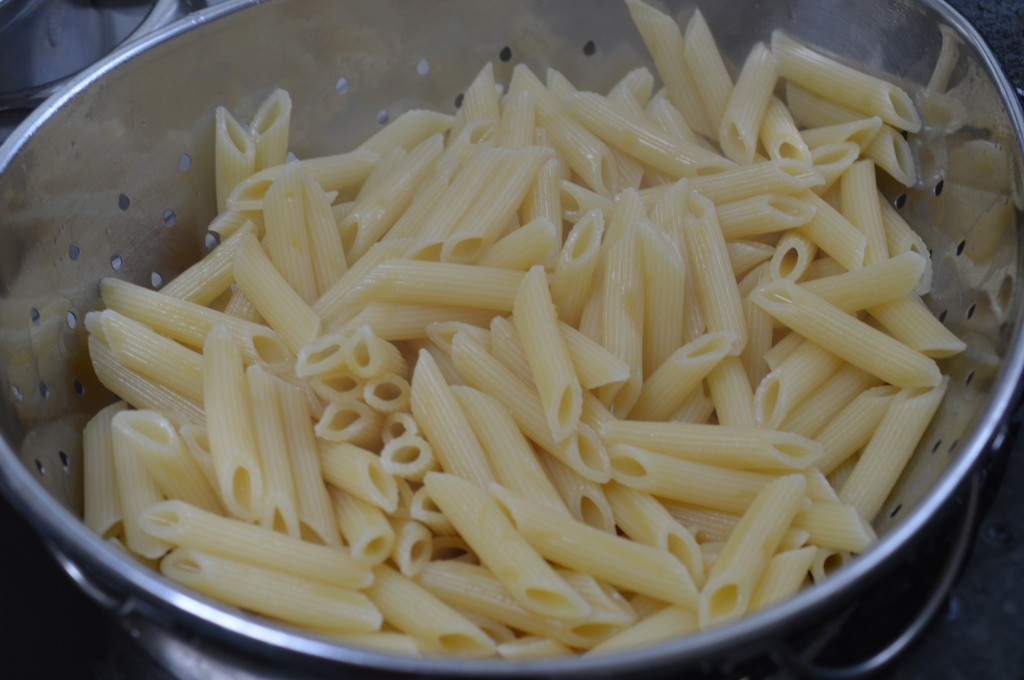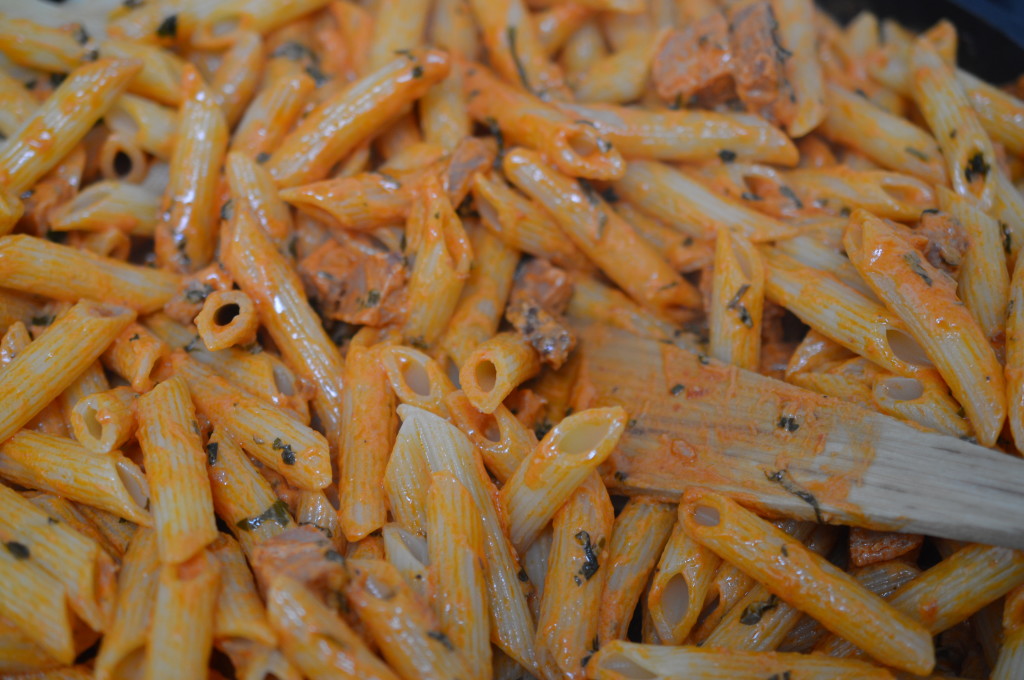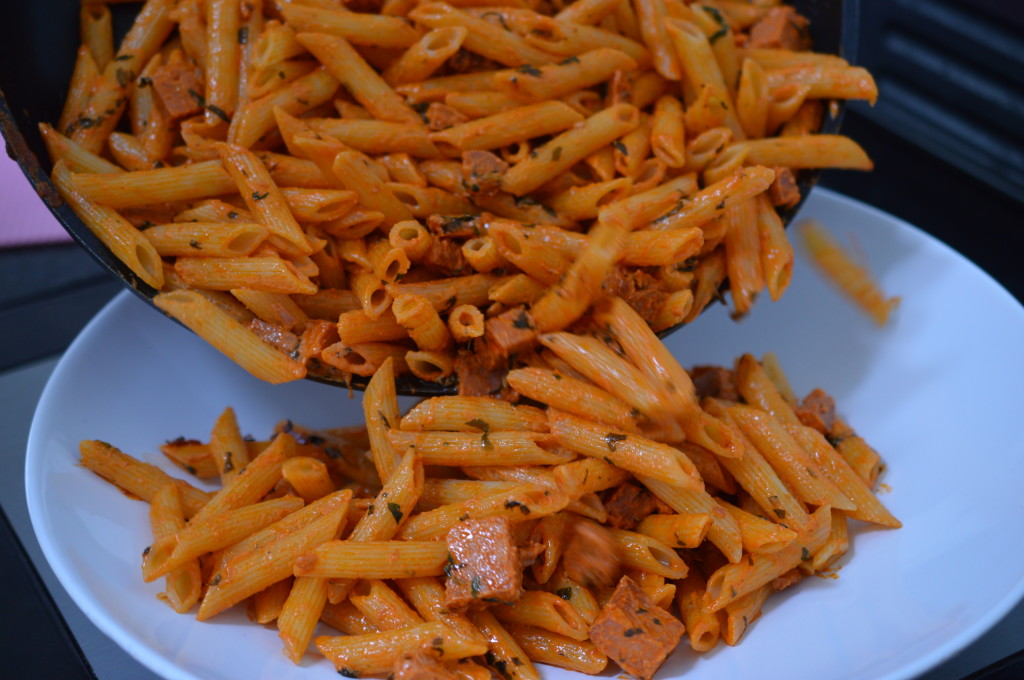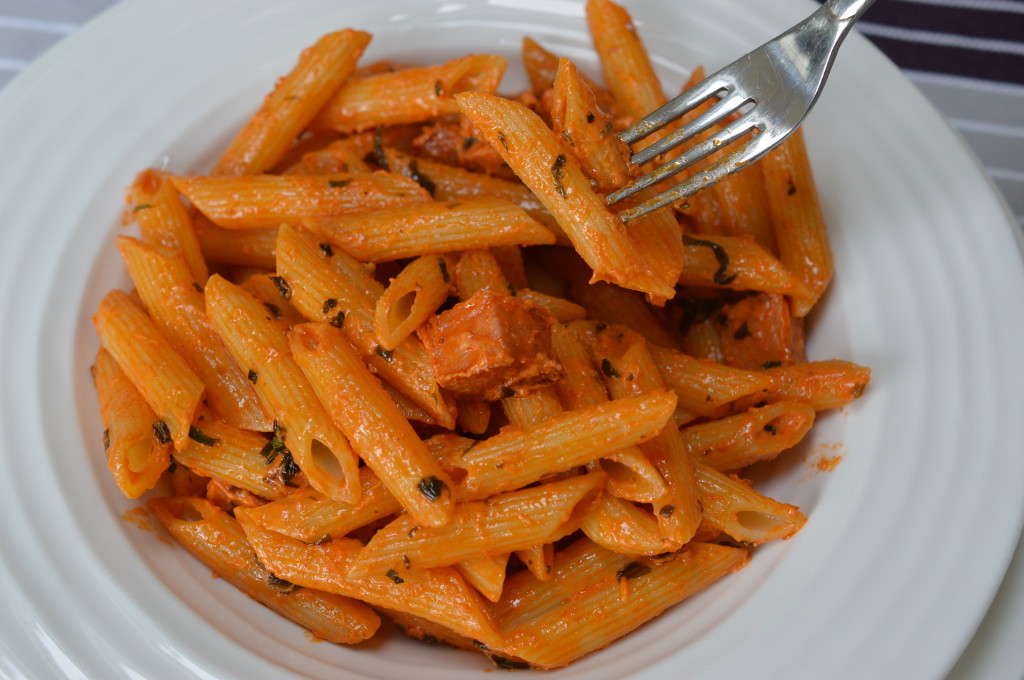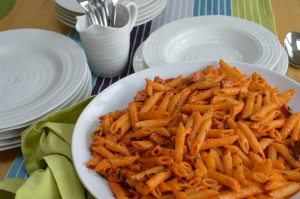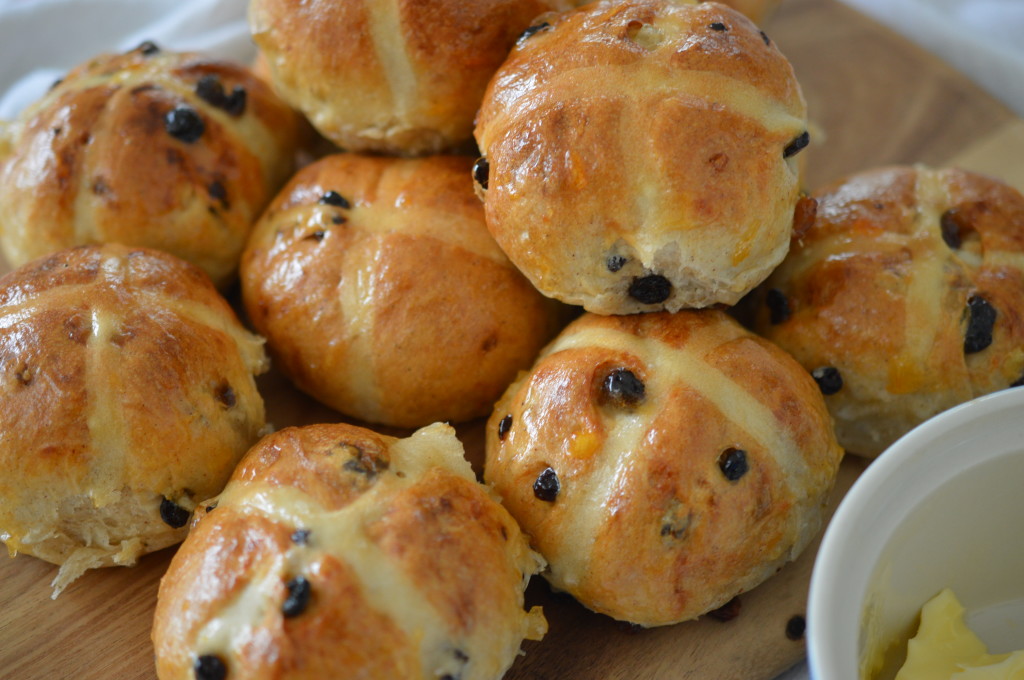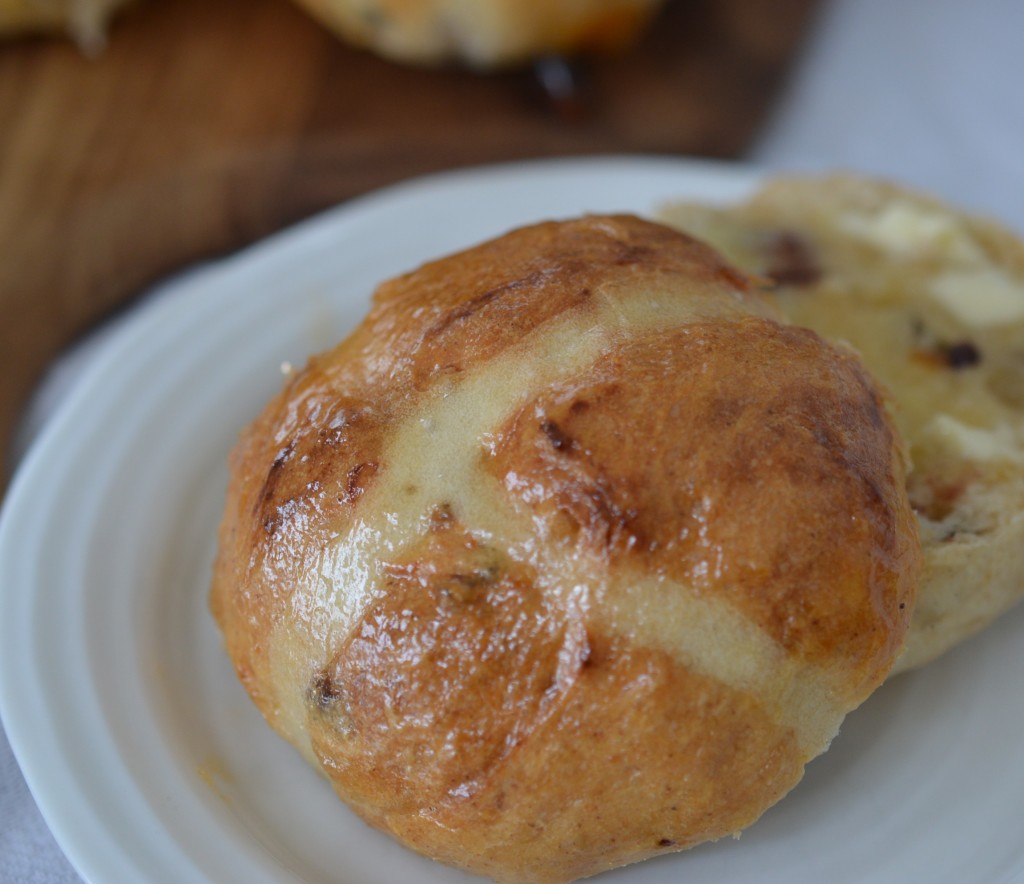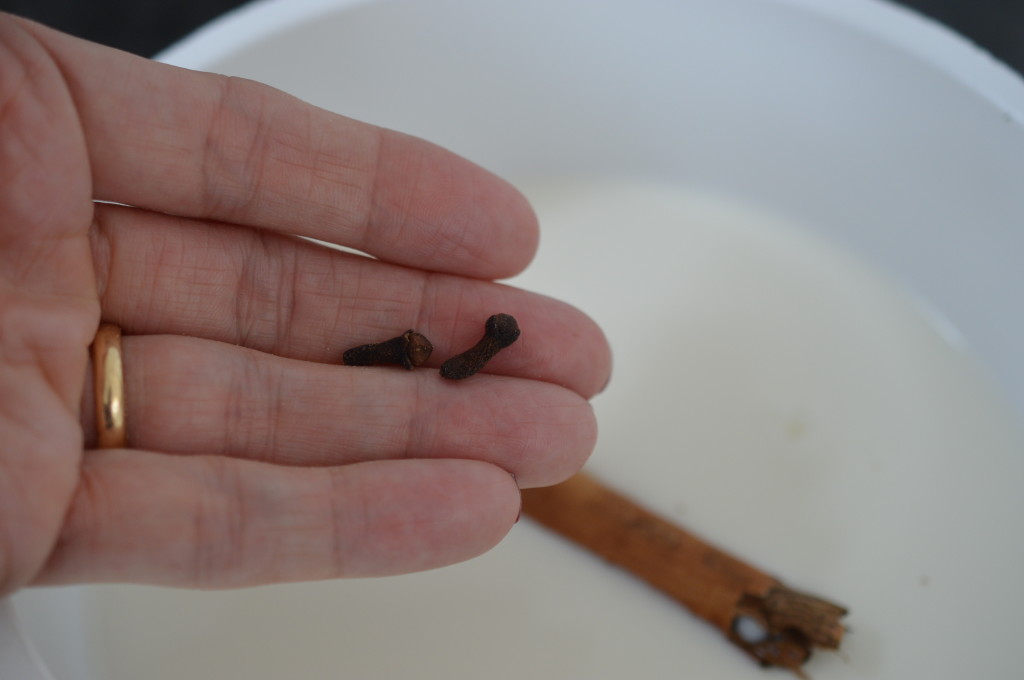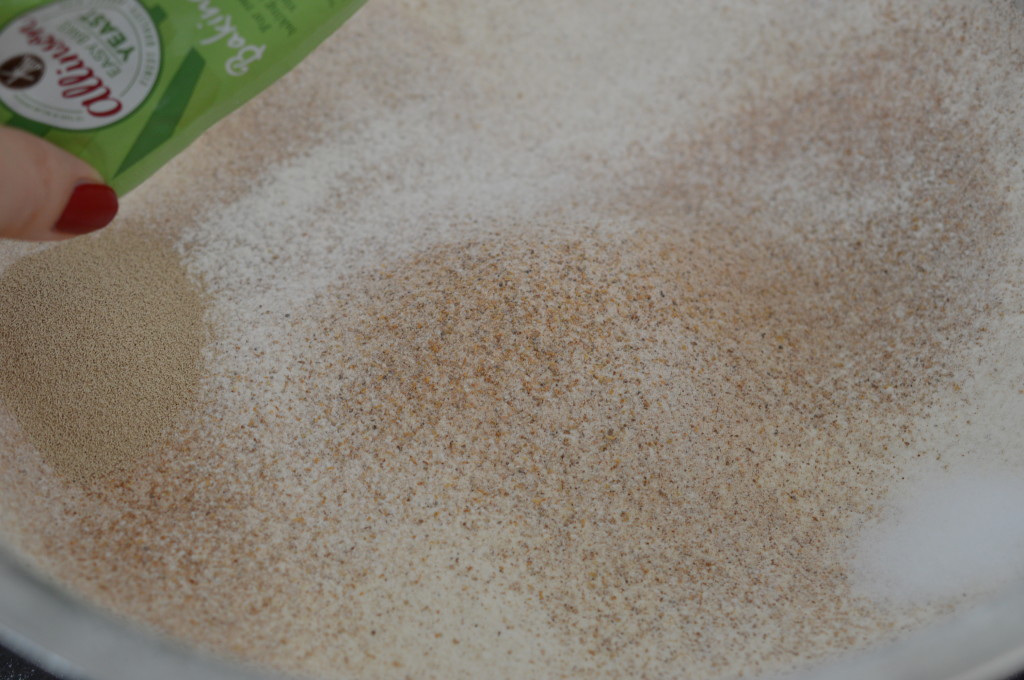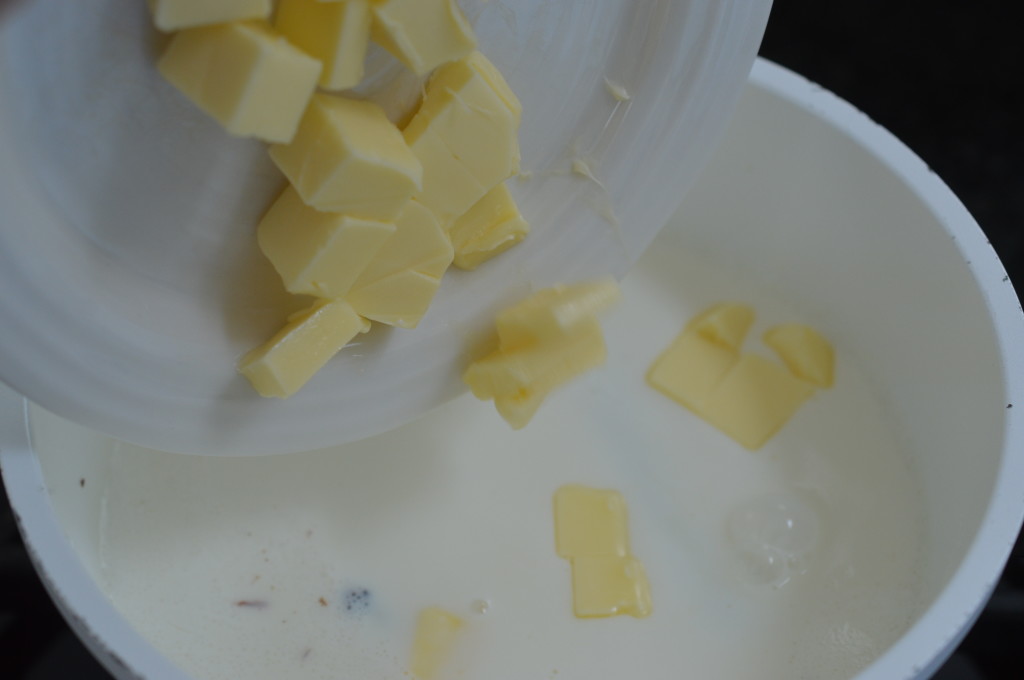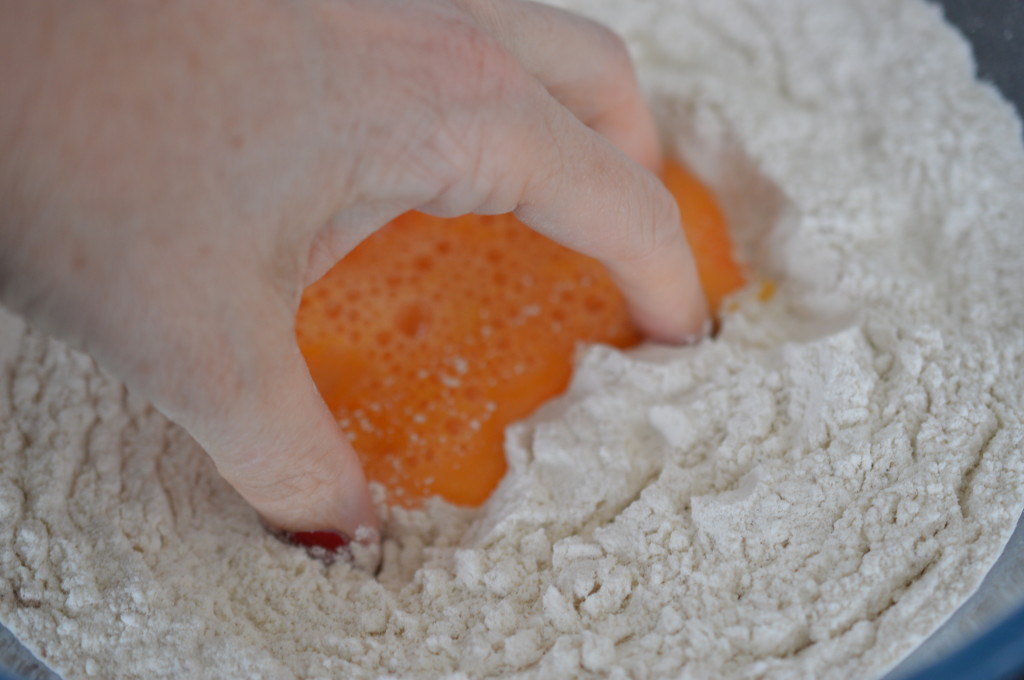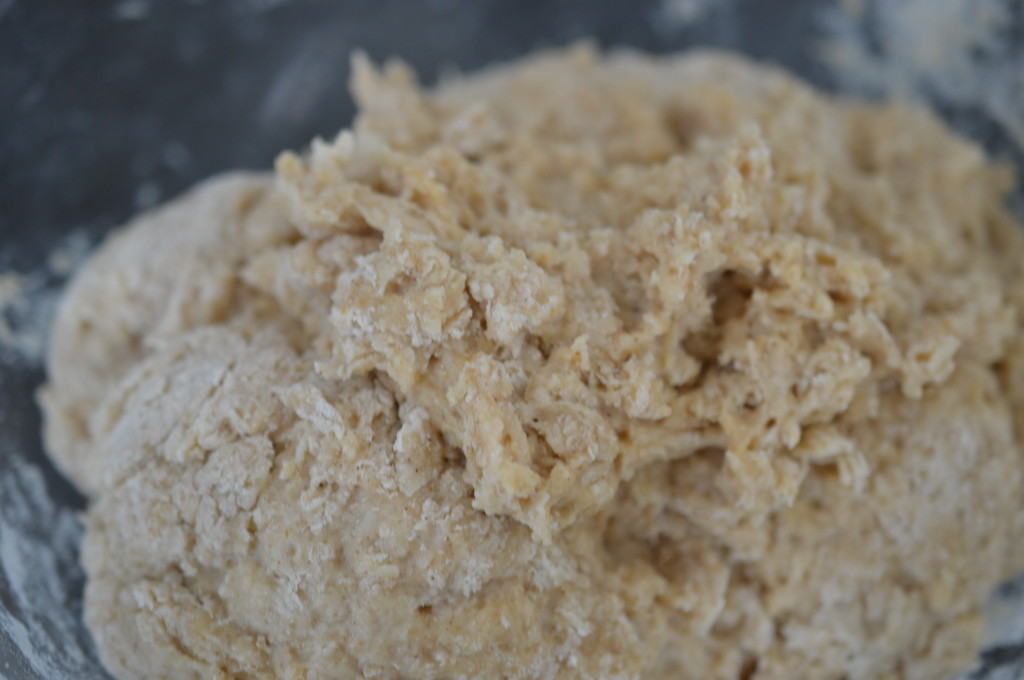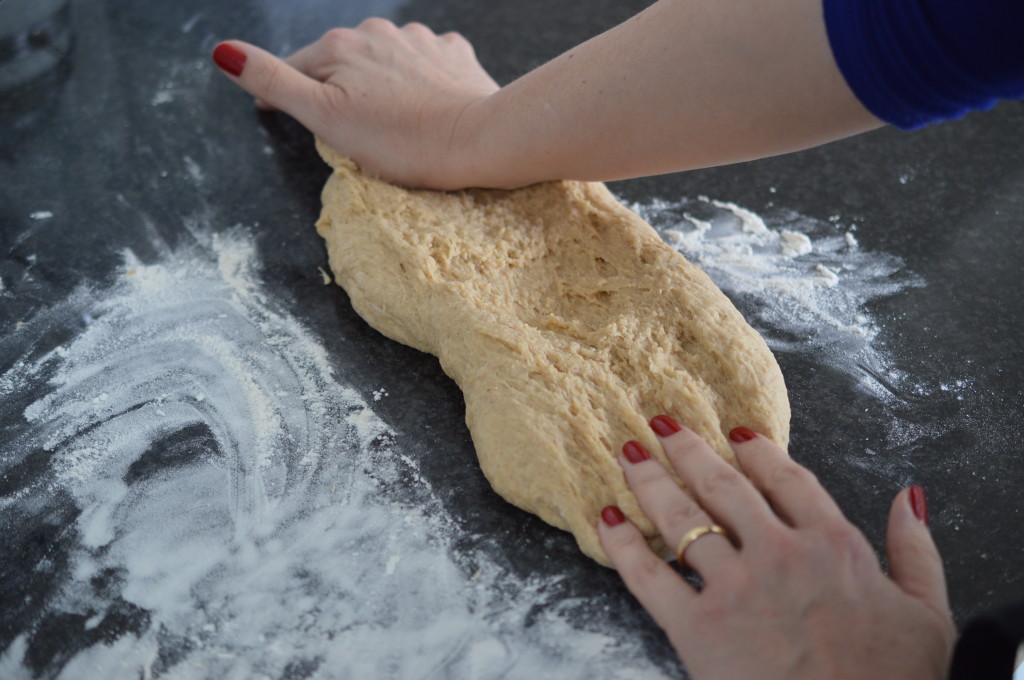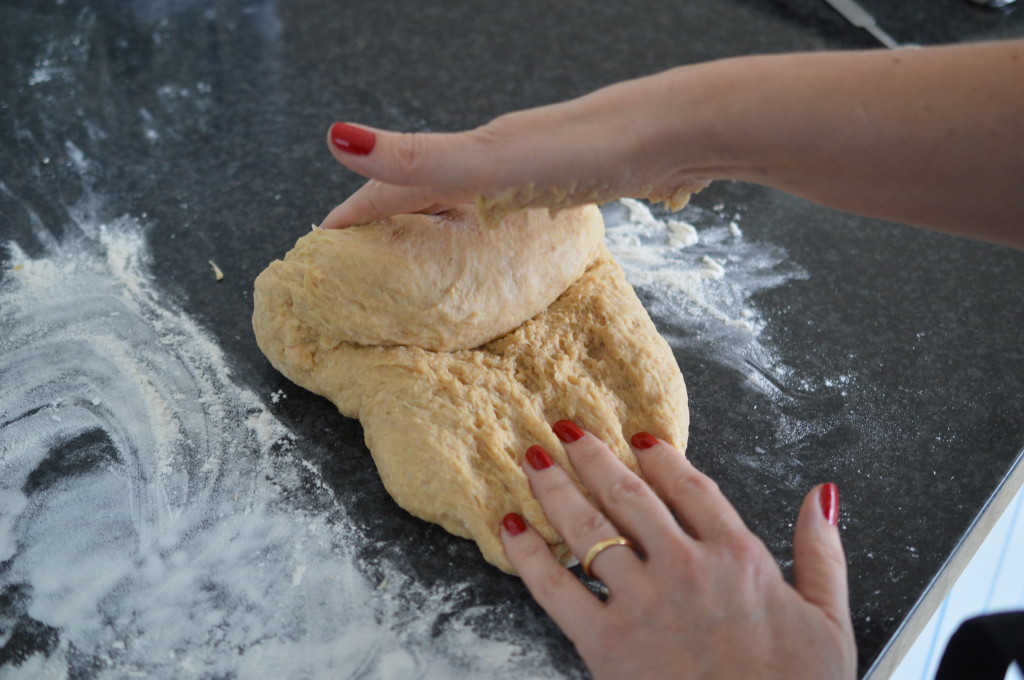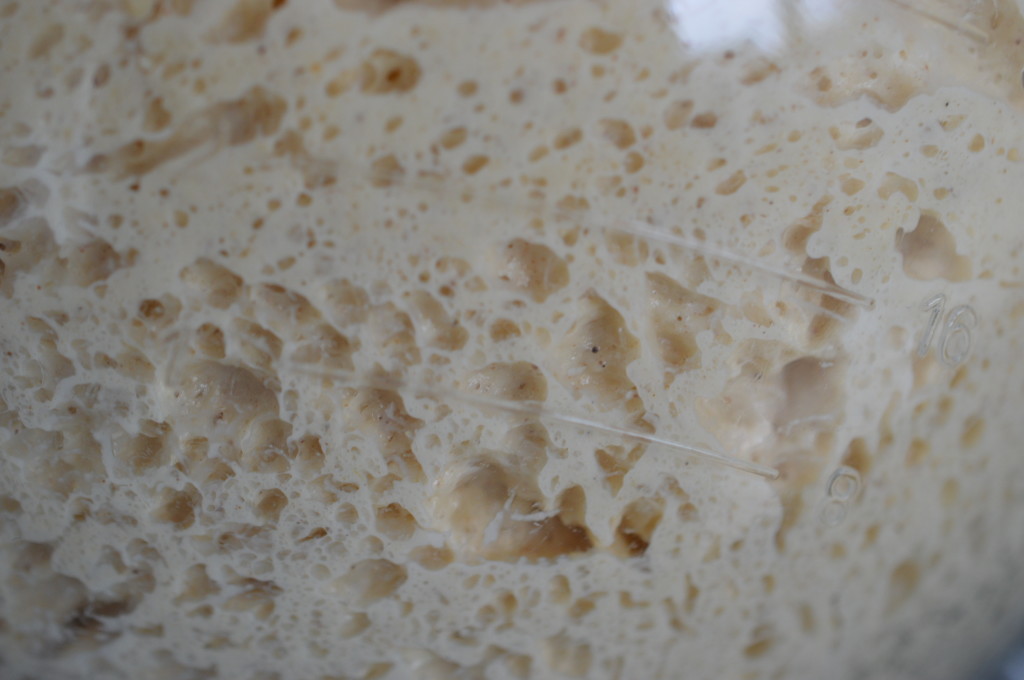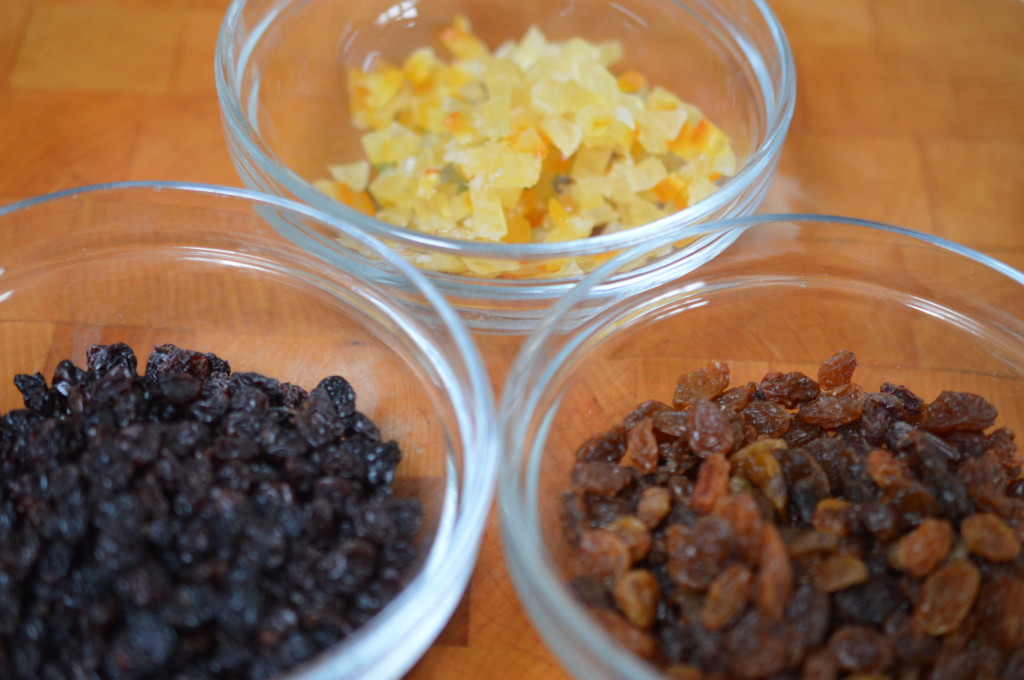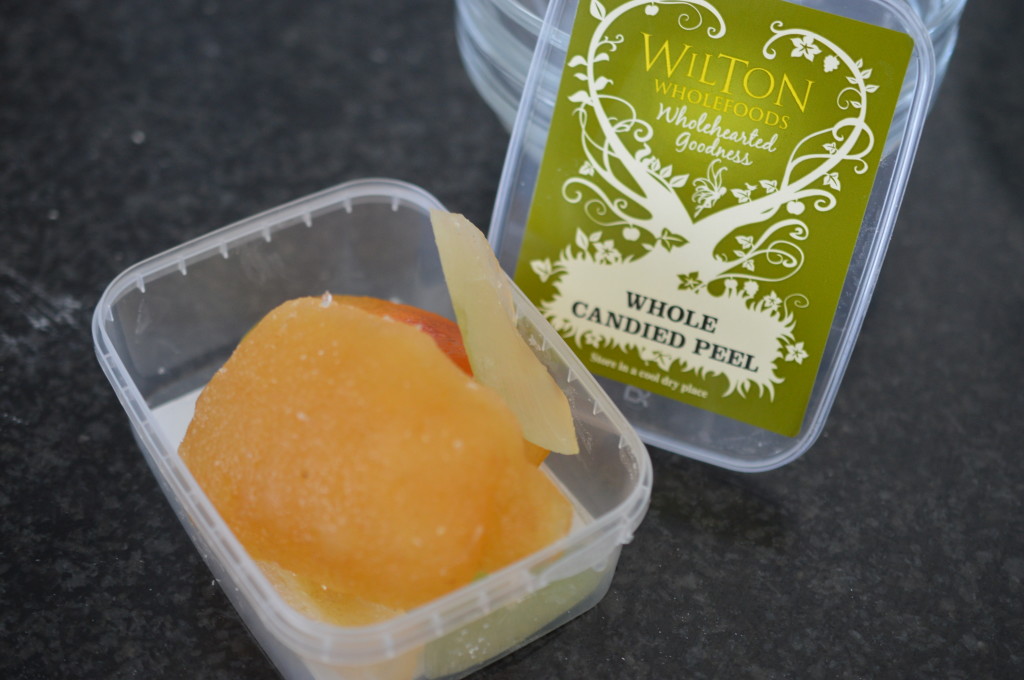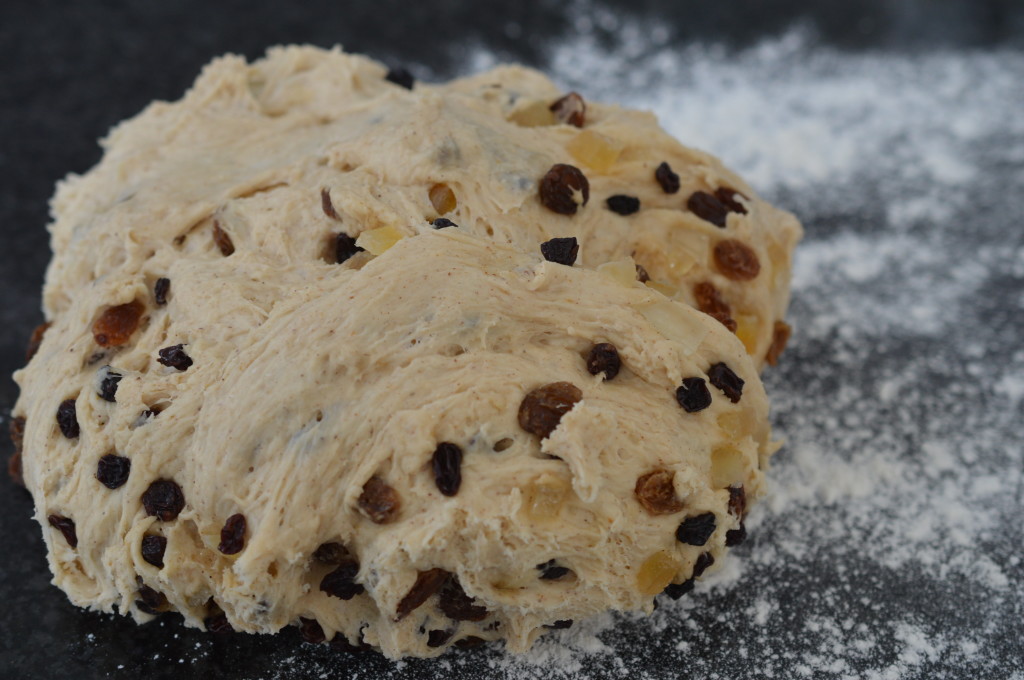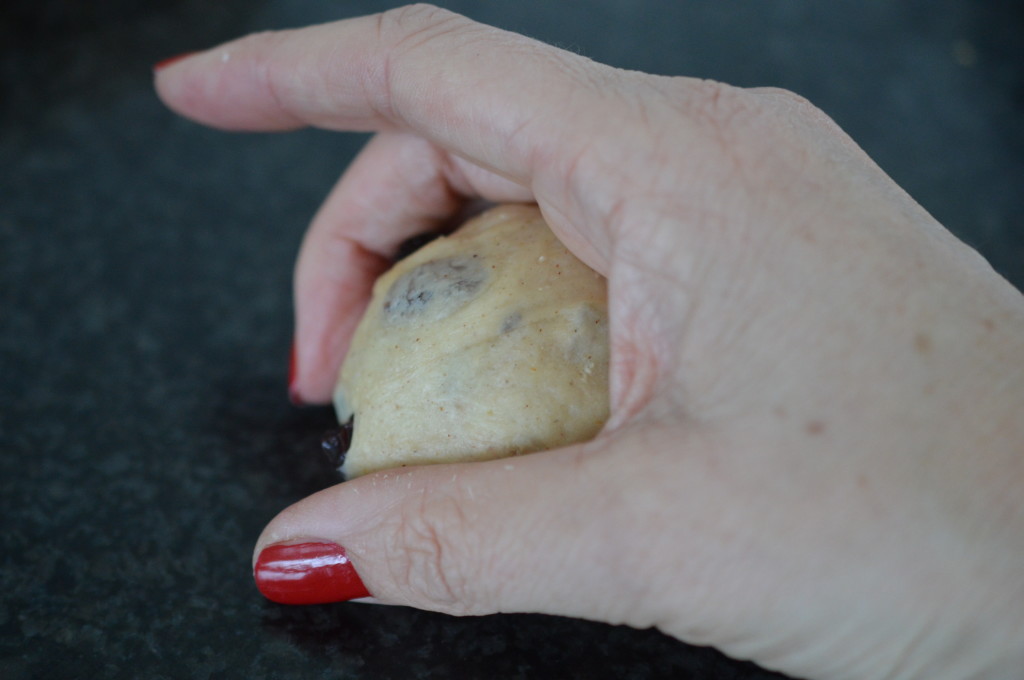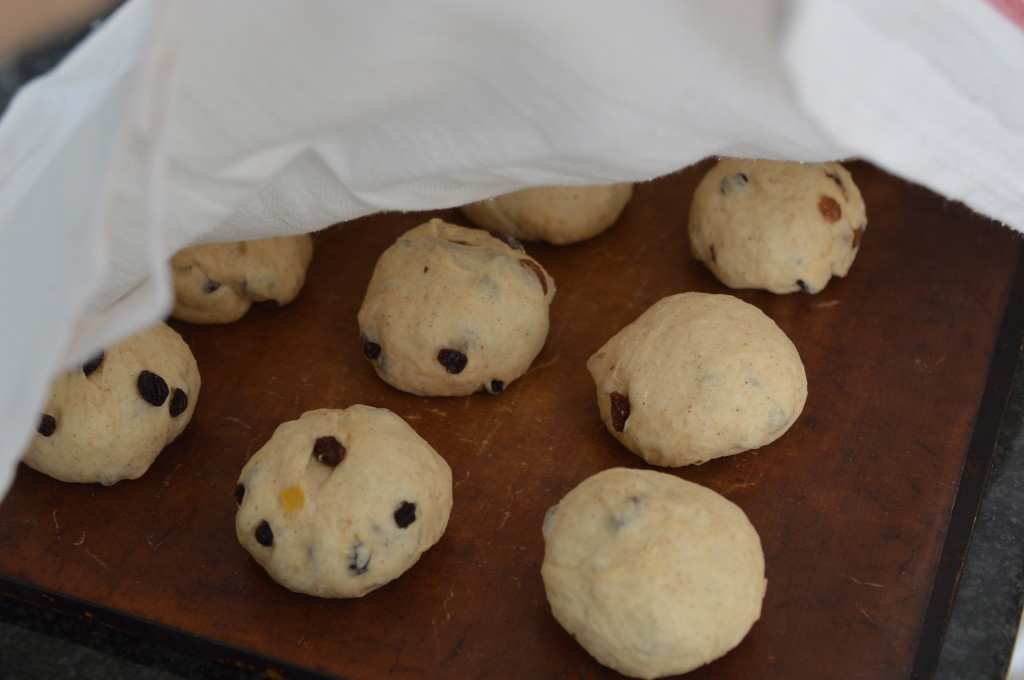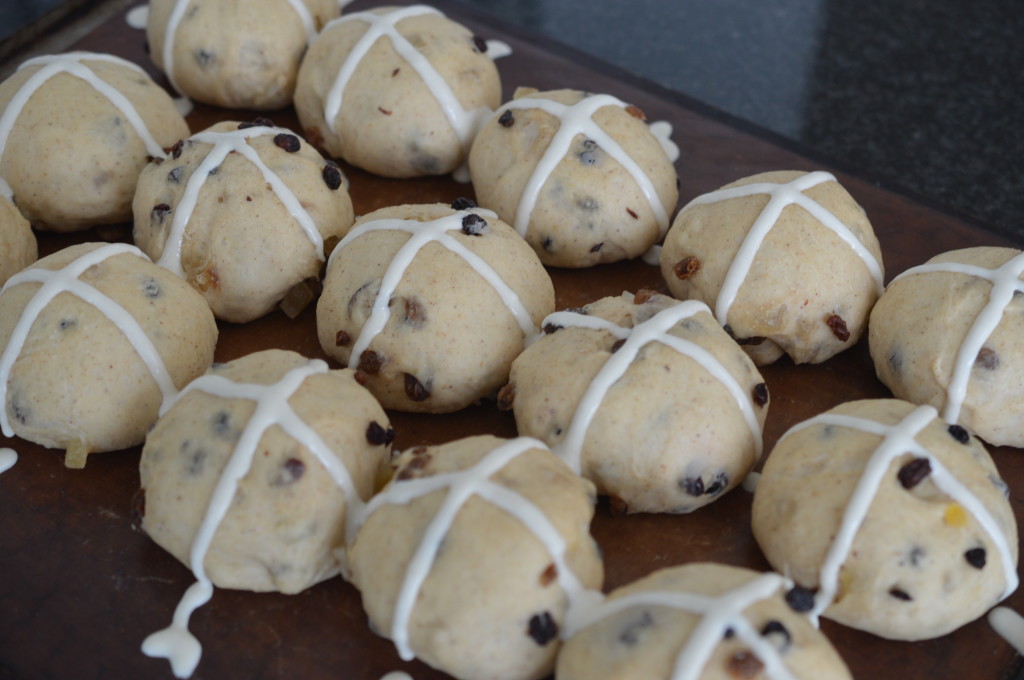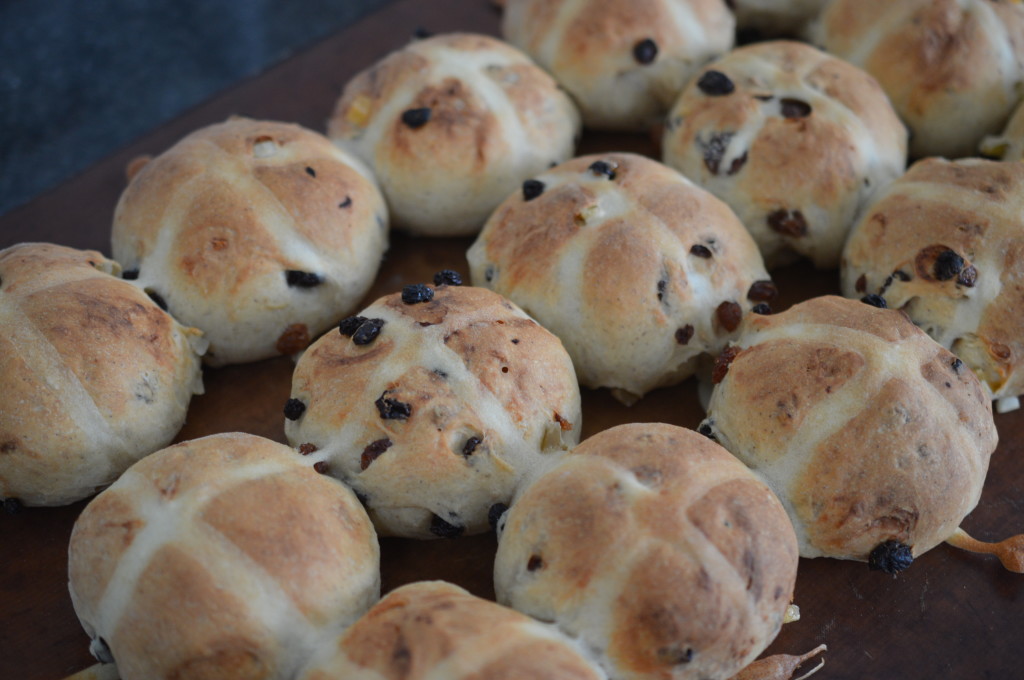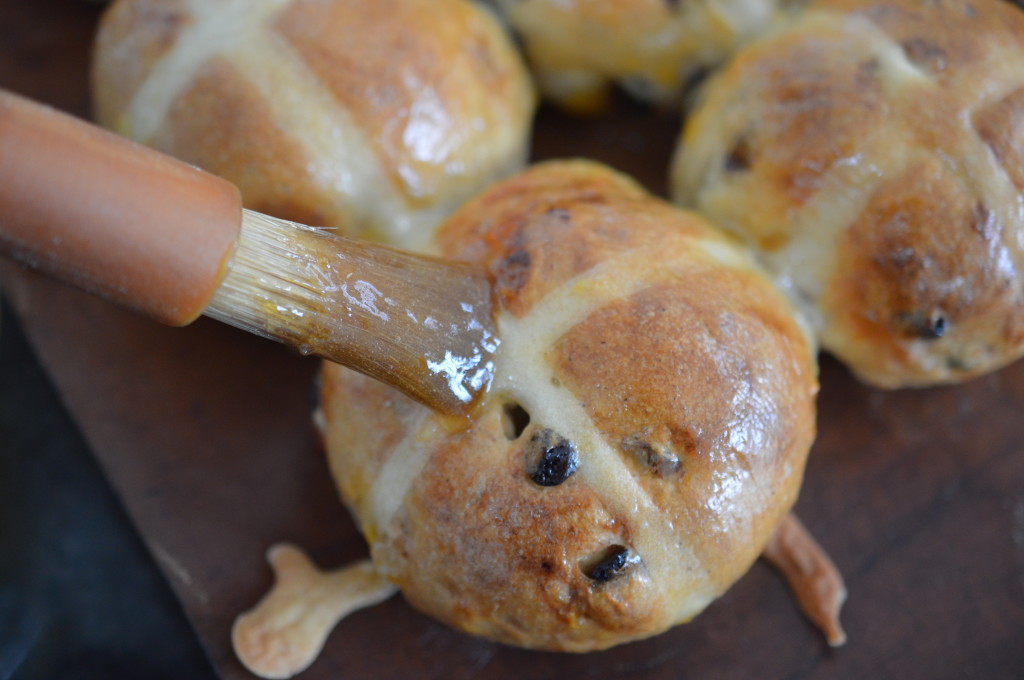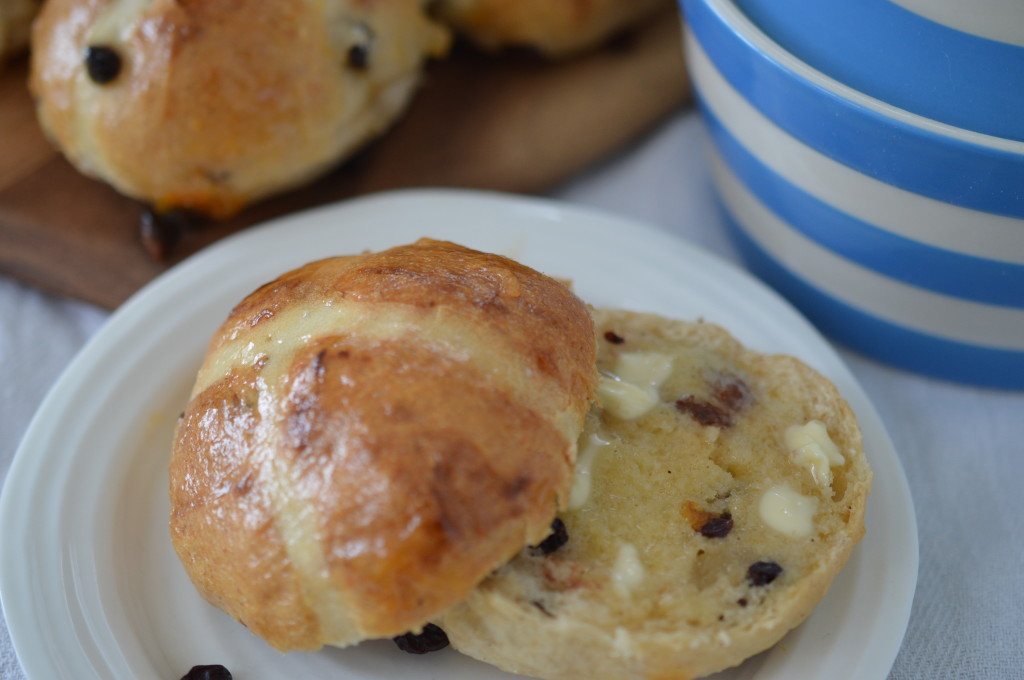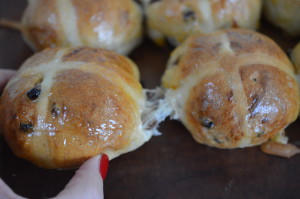Penne Rigate in Vodka
I know exactly why I decided to cook Penne Rigate alla Vodka this week.
It’s all the fault of C J Sansom. If I’m alone in the kitchen for any length of time I’ll invariably start listening to an audio book. This week it’s been ‘Dark Fire’. Book 2 in a brilliant series. It’s 1540 and Matthew Shardlake is working for Thomas Cromwell again. I can’t help but know 1540 is the year the very non-fictional Lord Cromwell’s head was parted from his neck … so there I am waiting for the axe to fall. Literally.
Shardlake’s mission ..?
Well, Cromwell wants to discover the secret of Greek Fire. Can he? I’ll not spoil it for you, but an idle comment from a passing son ruined the suspense for me. Nevertheless, I enjoyed the journey. Who put the boy in the well? Why won’t Elizabeth speak? And is Greek Fire really the new drink from Russia?
Which is how it happened I reached for the vodka bottle.
All I need to feed a family of seven.
The vodka in my cupboard is a British potato vodka. It even comes with a union-jack-bow tied round the bottle neck.
I really do think you get what you pay for when it comes to dried pasta. Sadly. I like De Cecco and Garofalo. Le Veneziana do a good gluten-free penne.
Begin by putting water on to boil. It always takes far longer than I expect to get it up to an angry boil. Lid on – will speed the process up. (Aga: bring it up to the boil on the floor of the Roasting Oven as that’ll keep the heat in your cooker.)
Allow 1 litre/1¾pints of water, minimum, for every 100g/3½oz pasta. That’ll stop it sticking together. Don’t add the salt yet. And don’t add any oil. There’s no point. It’ll just float on the top.
Chop the ham into chunky cubes.
Chop some flat-leaf parsley.
The stalks can go in a freezer bag and be popped into the freezer ready for home-made stocks.
Melt the butter in a frying pan and add the ham, parsley and some tomato purée. Give it a stir and let it cook away for ten minutes or so over a gentle heat.
Season with coarse sea salt and freshly ground black pepper.
Now it’s the vodka. I like to cook my vodka ‘out’. (If you want a stronger vodka flavour don’t add it now. Mix it in with the cooked and drained pasta later, before adding it all to the sauce.)
When the vodka has all but evaporated, I add the cream.
And that’s the sauce done.
By now the water should be boiling. Adding the salt now gets it swirling around the pan from the get-go – 10g/¼oz of salt per litre/1¾ pint of water. It’s quite a lot, but it’s all the seasoning the pasta is going to get. I was taught to think ‘salty like the mediterranean sea’.
Penne rigate is the traditional choice of pasta shape for this dish. (Penne means ‘quills’ in Italian and rigate is the ridged version.) Portion size depends on what you are doing. I use 70g/3oz of dried pasta for a first course and 100g/3½oz for a main course.
After adding the pasta, quickly put the lid back on and bring it back to a rolling boil as soon as possible. As soon as it is, lid off again. My packet states a cooking time of 11 minutes – so I set the timer for 10. Al dente is the point at which the pasta is cooked through – no chalky centre – but there is still some ‘bite’. I don’t think I’ve ever cooked my pasta for as long as the packet suggests.
Before you drain the cooked pasta – scoop out a little of the cooking water. If you want to loosen the finished dish the starchy water is the perfect thing to use.
Tip the pasta into the sauce and stir together.
Transfer to a warmed serving dish. Personally, I don’t serve ‘Penne Rigate in Vodka’ with parmesan as I don’t think it needs it.
All those ridges hug the sauce. Delicious.
Eat.
Serves 7
- 100g/4oz unsalted butter
- 2 thick slices of ham, flexible
- 4 tablespoons of tomato purée
- 2 tablespoons of flat-leaf parsley, chopped
- 10 tablespoons of double cream
- 6 tablespoons of vodka
- 700g/12oz penne rigate
- Salt and pepper
Start by getting the water for cooking the pasta on to boil. It needs to be a fast, rolling boil. Think ‘angry Mediterranean sea’.
Melt the butter in a large sauté pan. Add the ham, the parsley and the tomato purée. Cook over a gentle heat for about 10 minutes. Season with salt and pepper.
Stir in the vodka and cook until it has evaporated. Then add the cream and warm through before taking it off the heat.
Once the water is boiling, add the salt. 10g/2oz for every litre/1¾ pints of water. Now add the pasta and give it all a stir. Replace the lid and bring it back to a fast boil. As soon as it’s boiling, remove the lid again. You’ll need to stand by and give it the occasional stir. (Aga: Keep the lid on and put it into the Simmering Oven for the same cooking time as you’d do on the hob). Don’t rely on the packet instructions as it’s often less. Cook until al dente.
Scoop out a little of the starchy pasta water and reserve. Use to thin the sauce, if necessary.
Drain. Transfer the cooked pasta to the sauce and mix together.
Eat.
